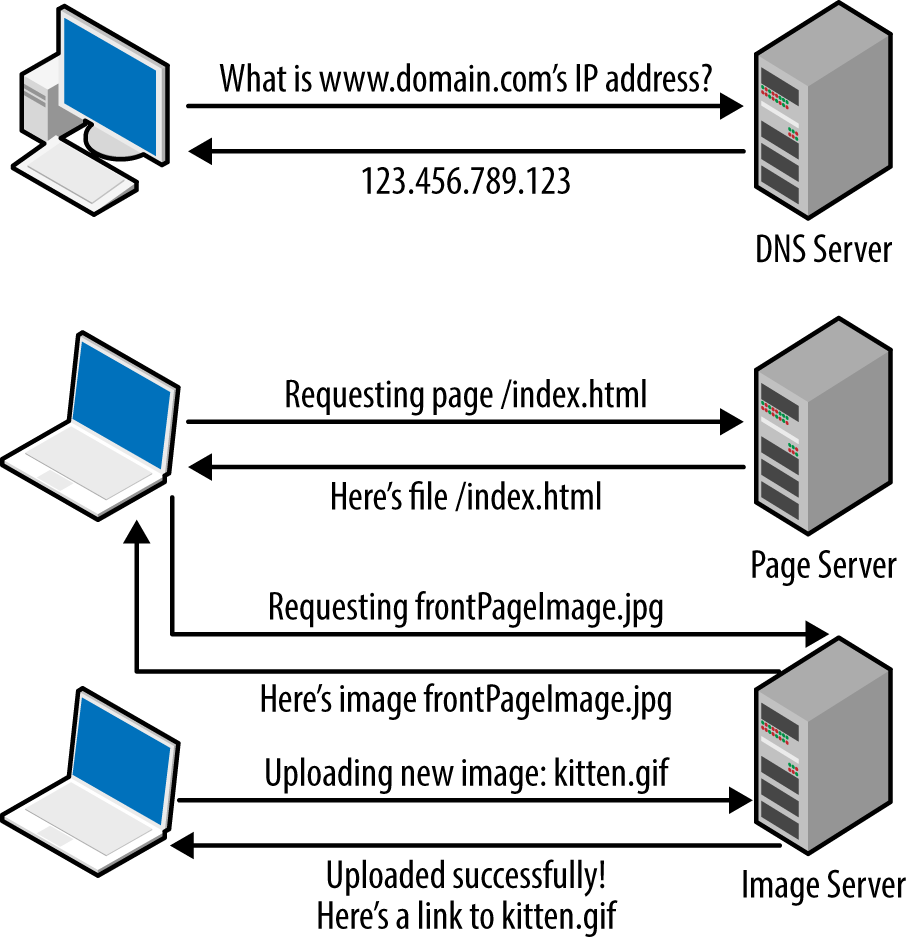Appendix B. The Internet at a Glance
As the types of transactions the Internet is required to handle become increasingly complex, the terms and technologies used to describe these transactions also increases in complexity. Far removed from its roots as a way to exchange research messages, the Internet must now handle large file uploads, streaming video, secure banking transactions, credit card purchases, and the transmission of sensitive corporate documents.
Despite these extra layers of complexity, however, the Internet remains, at its core, a series of messages. Some messages contain requests for information, some contain messages intended for a distant recipient, some contain file information or instructions for a particular application on the machine itâs being sent to. These requests are sent from a client (desktop or mobile device) machine to a server, and vice versa. They can also be sent between servers themselves, perhaps in order to gather more information requested by a client.
Figure B-1 depicts a few common types of Internet transactions: a request for the location of a server at a particular domain name, the request of a web page and its associated image file across two servers, and uploading an image file.

Figure B-1. A few types of common Internet transactions between clients and servers
There are many different protocols, or languages, that govern these communications ...
Get Web Scraping with Python now with the O’Reilly learning platform.
O’Reilly members experience books, live events, courses curated by job role, and more from O’Reilly and nearly 200 top publishers.

